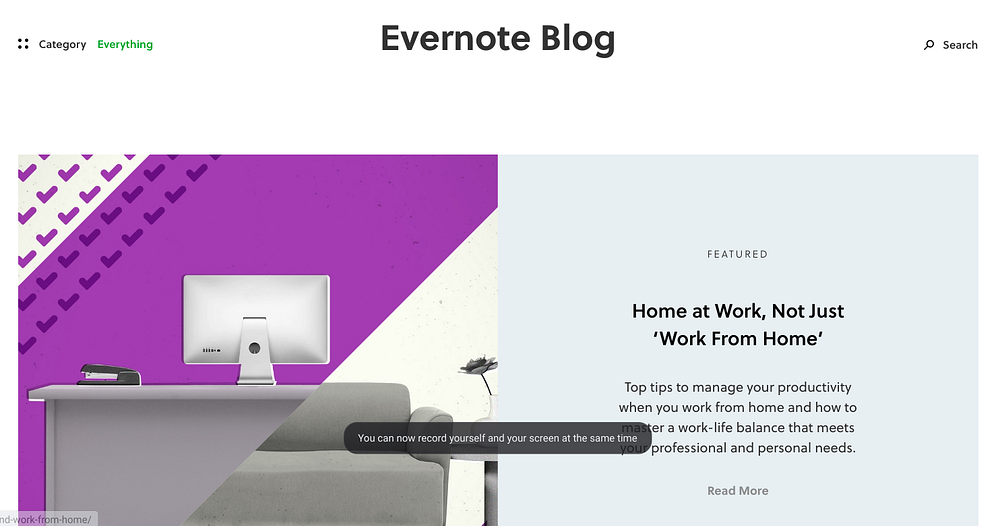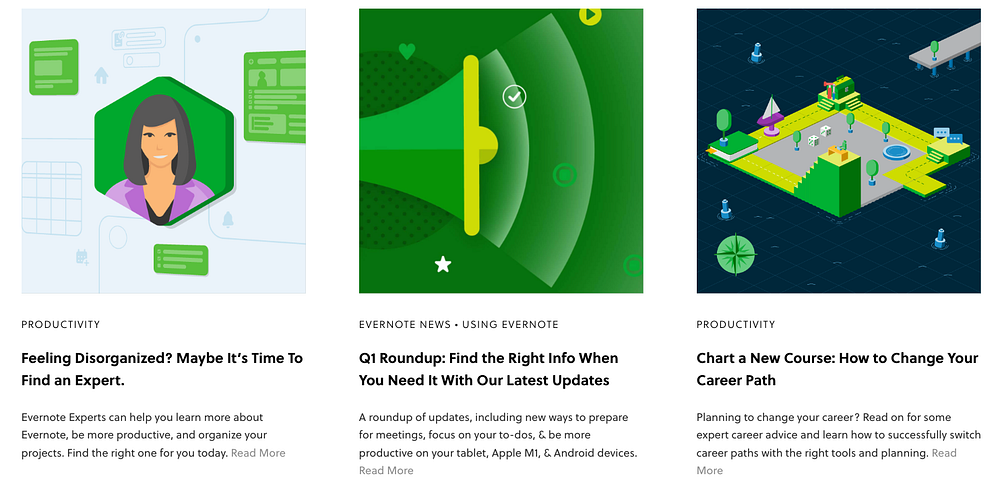Many aspects decide whether a blog post is considered perfect or not. But your blog’s content can be a crucial determinant when creating the ideal blog post.
If you are armed with a good writer and interesting content, you are closer to attracting your reader’s attention, but it is not enough to attract attention. A good blog post is beautifully curated in that it holds the attention of your audience hostage (in a non-creepy mind control way).
While we can sit (or stand, depending on office preference) and debate if your blog post is perfect or not, it is better to show what one is or, in this case, the Anatomy of a perfect blog post.
Evernote creates some of the best blog posts.
Have you ever had a gut feeling that something works? It can be kind of hard to explain, but that is how we felt when we stumbled on Evernote’s idea of content marketing. It isn’t new, so we wonder why it took us a while to notice.

Part of Evernote’s content marketing strategy revolves around letting their customer’s experience tell the story of why you should purchase their products.
Why does this work? As we all know, Evernote is a note-taking software, and as much as it would be fun to go on about its features, it can get repetitive and boring, so Evernote found a solution.
By letting customers speak of their experience with the software, Evernote gets different stories and genuine reactions to their content. One of the key things that can sway customers into purchasing a product is reviews because customers expect that they are reading honest feedback from people just like them.
Evernote’s approach to customer experience portrays the brand as one that is transparent, trustworthy, and a brand that cares about its customers.
Before you wonder why we are discussing Evernote since this is supposed to be about perfect blog posts, it is because Evernote brings us to our first point. Evernote creates content around what works for their products.
1. Adapt to your audience’s needs
Your posts can do more than just inform your readers. They can also persuade and inspire them, especially if your end goal involves sales which most do. Evernote was limited in their approach because of their product, but they spun things around by focusing on building customer trust with the content produced.

Evernote appealed to the emotions of their customers because they knew what was needed. A perfect blog post should be fully adapted to what your target audience requires (if you want to make any headway at least). You can do this by being tactful in the way you structure your arguments. Figure out who you are talking to and work accordingly.
2. Keep it simple
The only reason your blog post, especially for corporate writing, should be incomprehensible is if it moonlights as a white paper. Since SEO ranking tends to create organic leads, having a post with an average of 2300 words is acceptable. Anything longer when interacting with a very general audience would be a waste.
The average reading age in global markets like the United Kingdom and USA ranges are 9 and 13, respectively, while China’s 15.
Take the “For Dummies” book empire for instance. This company turned into a multi-billion-dollar company by simplifying technical or not so easy to understand topics. In 2019 alone, 6.3 million “For Dummies” books were sold; the equivalent was 1 every 5 seconds.
This company made a fortune by lowering the reading level on complex topics so that everyone could do it. While this might not always be your target, do not assume that the vast majority will understand because oftentimes, they don’t.
3. Make use of active voice
You can always keep your readers interested when your content is engaging and who doesn’t want an engaged audience? Business writing should be in active voice because passive voice takes longer to read and can bore sometimes.
It also lessens the impact of a sentence and can even make your meaning unclear. Active voice goes; “We made a cake.” But passive voice reverses this and says; “The cake was made (by us).” Active voice is easier for readers to understand and makes for more compelling sales copy.
The big companies know this and use it wisely. A good example is Forbes and Microsoft; the published content of these websites carries more active voice than passive voice. If the top guns are doing it, why shouldn’t you?
4. Utilize white spaces
What do the ThinkingBox and Harvard Art Museum have in common? Their websites utilize white space. We remember when white spaces were considered a waste of space and a false tactic used by people who lacked information on their products.
Now the story is different (to those who matter, at least). We know that white space creates a natural flow of your content with each line, and it makes your words easier to understand.
It creates emphasis on texts with their larger-than-life presence. You can automatically capture your audience’s attention using large letters without being distracting. Lastly, why would you pick a cluttered page over a sleek, professional one?
White space highlights important information and eliminates unnecessary design elements.
5. One point per paragraph
This is not an earth-shattering idea, but we have found it to be a useful shortcut when creating blog posts.
One of the more common problems with amateur writing is the tendency to stuff information into a paragraph till it looks like a sausage ready to burst at the seams.
This information overload makes it difficult to follow the story because you have to hold so many different ideas in your head at once. It usually happens when someone has an idea they are excited about and want to share, but don’t know how to organize or present it. They just launch into a torrent of words that overwhelm the reader.
It doesn’t take a lot to remedy this; just take a breath and split your information into paragraphs. Each point should get its own paragraph.
The perfect blog post is a myth
In reality, there is nothing like the perfect blog post.
If there was, it would be content well-executed that it delivers unlimited conversion over its entire lifespan, which we all know is not possible.
The essence of this blog is to direct us back to the importance of framing and understanding your audience if you really want to increase conversion. But you can’t get results if you never start, so just start! Start by doing the work, researching who your audience really is, what they care about, and where you can find them.
Use that information to create “hooks” that draw people to your post, then utilize an inviting structure and narrative that keeps them reading till the end.
Make it easy for them to find more information from you, share the post with your social networks, get feedback on it, then iterate and produce better content in the future.
That’s all there is to it! Maybe we should go into the “For Dummies” business as well.

